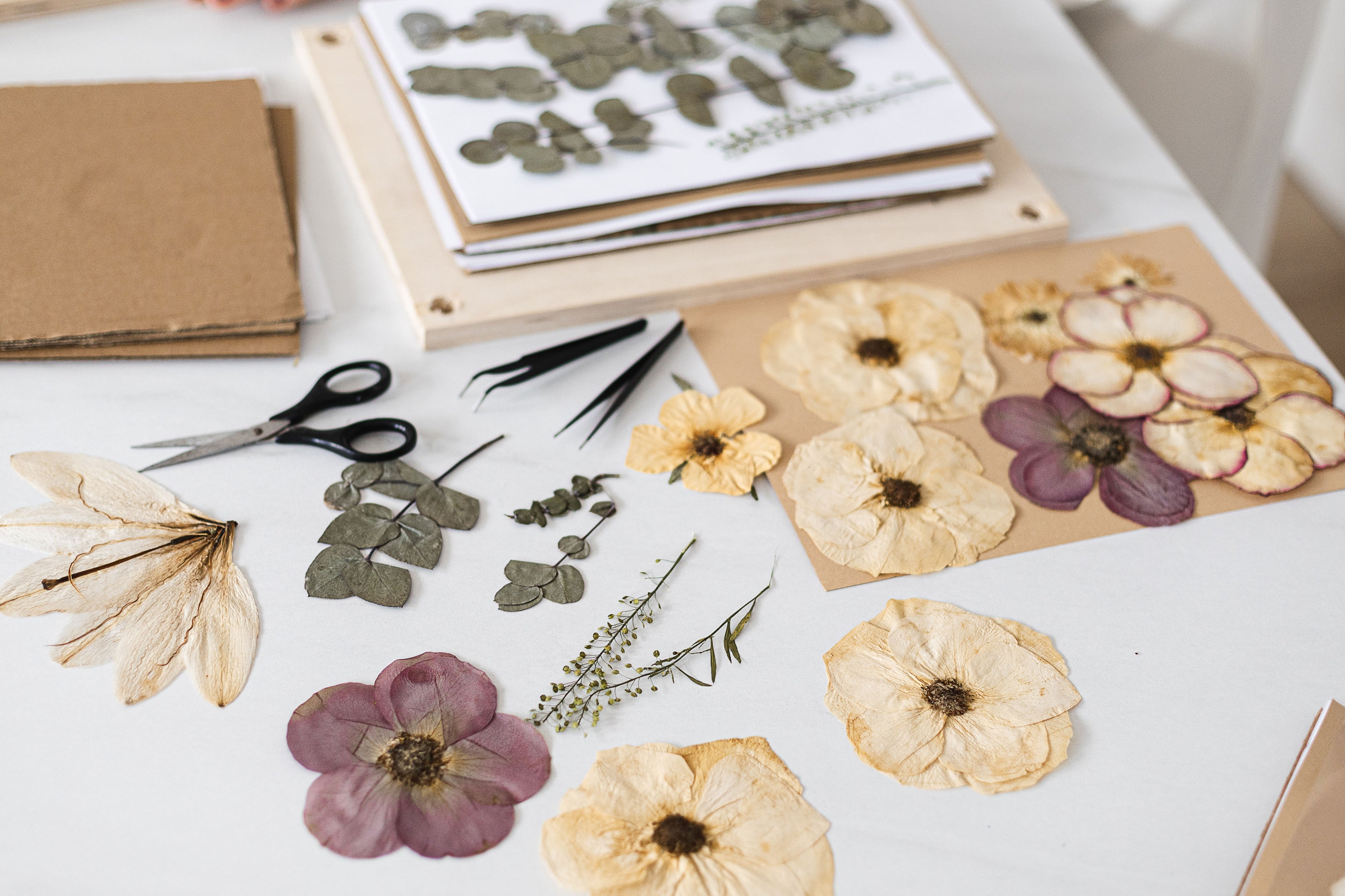
Pressed Flower Color Correction
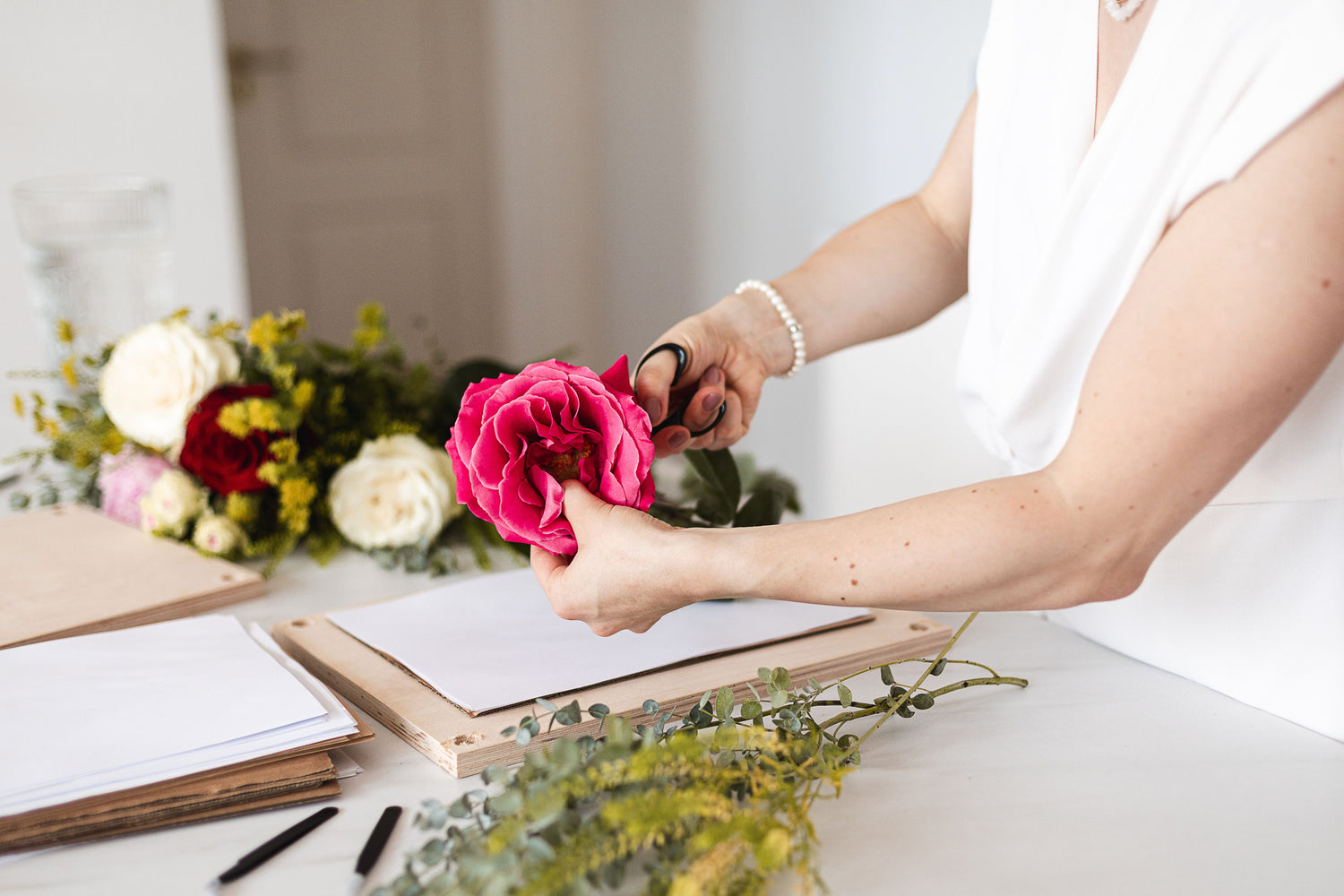
Why Do Flowers Change Color?
During traditional flower pressing, flowers naturally undergo color changes. As they lose moisture in the pressing process, their pigments are also affected. Some flowers, such as most roses, dahlias, snapdragons, larkspur, sunflowers, and buttercups, retain their colors very well. However, other flowers are less suited for this process, and their colors may fade or darken. Vibrant hues often become more muted, while white and pale pink flowers may fade or take on a brownish tint. While this transformation creates a natural and romantic effect, some brides wish to preserve the original colors of their bouquets as much as possible.
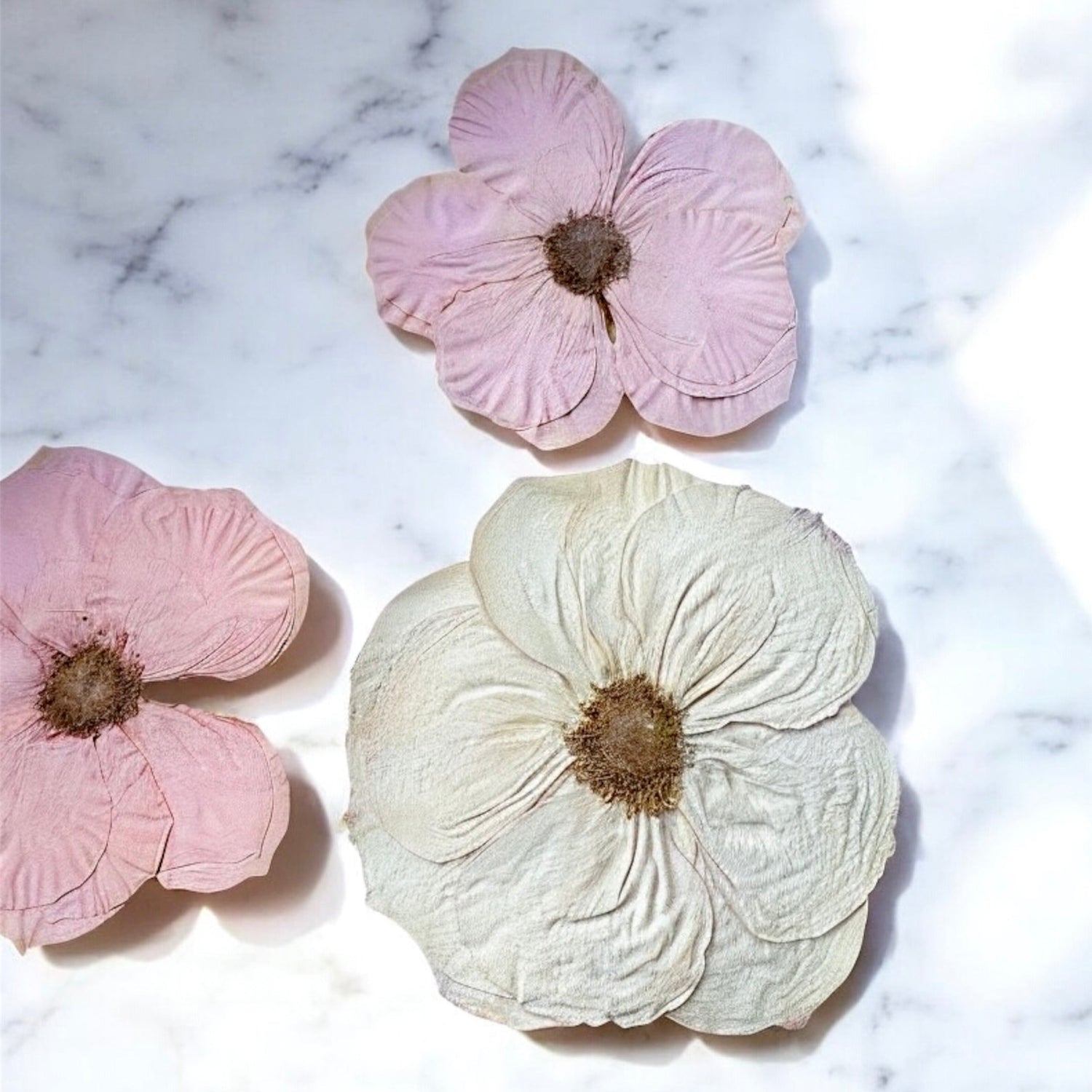
What Material Is Used for Color Correction?
Color correction is done using a professional fine powder-based artist pigment, which is meticulously applied to the petals of pressed flowers with a brush. This technique allows the flowers to regain their natural shades while maintaining an authentic and delicate appearance.
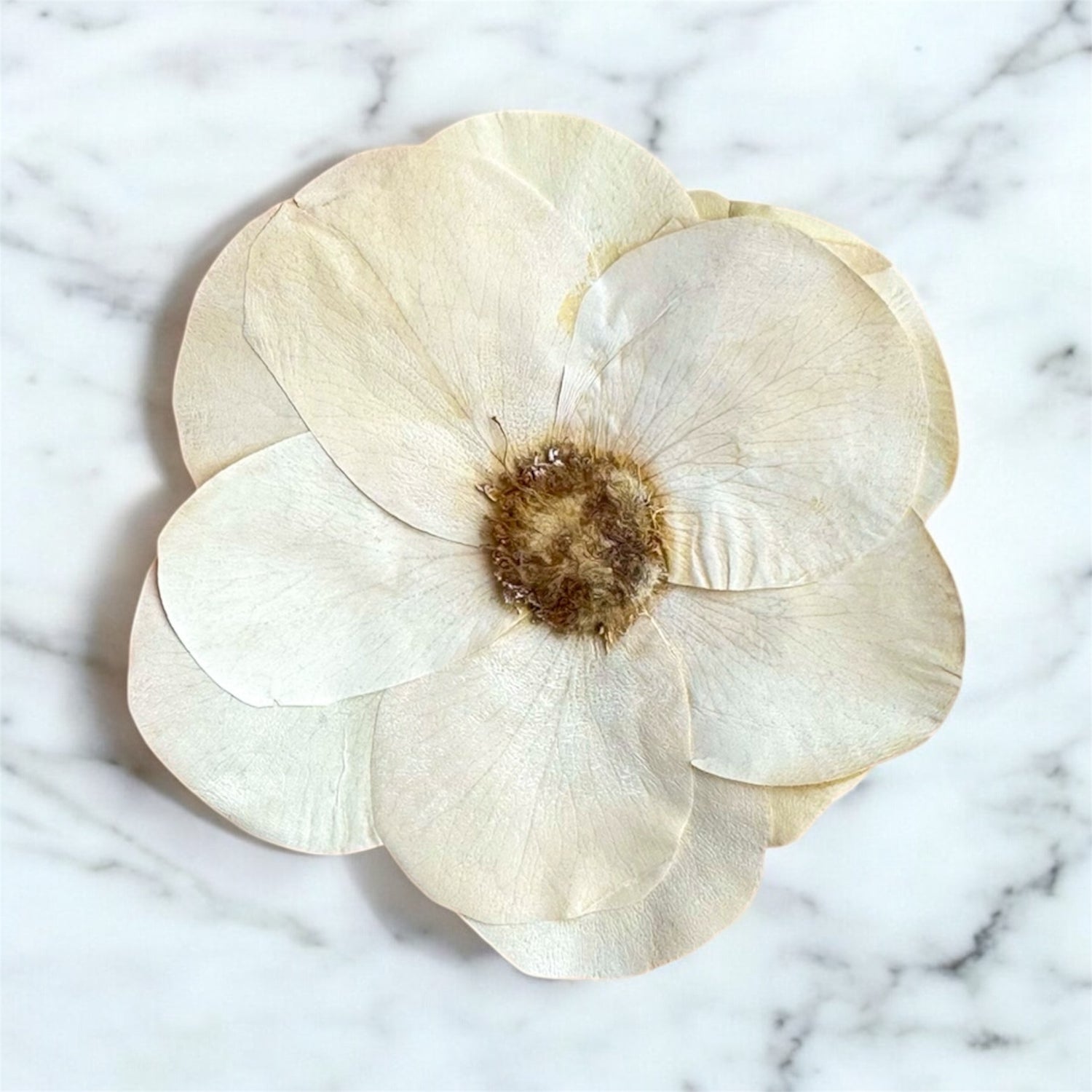
Which Flowers Can Be Color-Corrected?
We only apply color correction when necessary, as we believe in preserving the natural beauty of flowers and their unique hues after pressing. This service is primarily available for white and pale pink flowers. If you would like to request color correction, you can indicate it when placing your order on our webshop. We particularly recommend this option for bouquets consisting entirely or predominantly of white and pastel, light pink flowers.
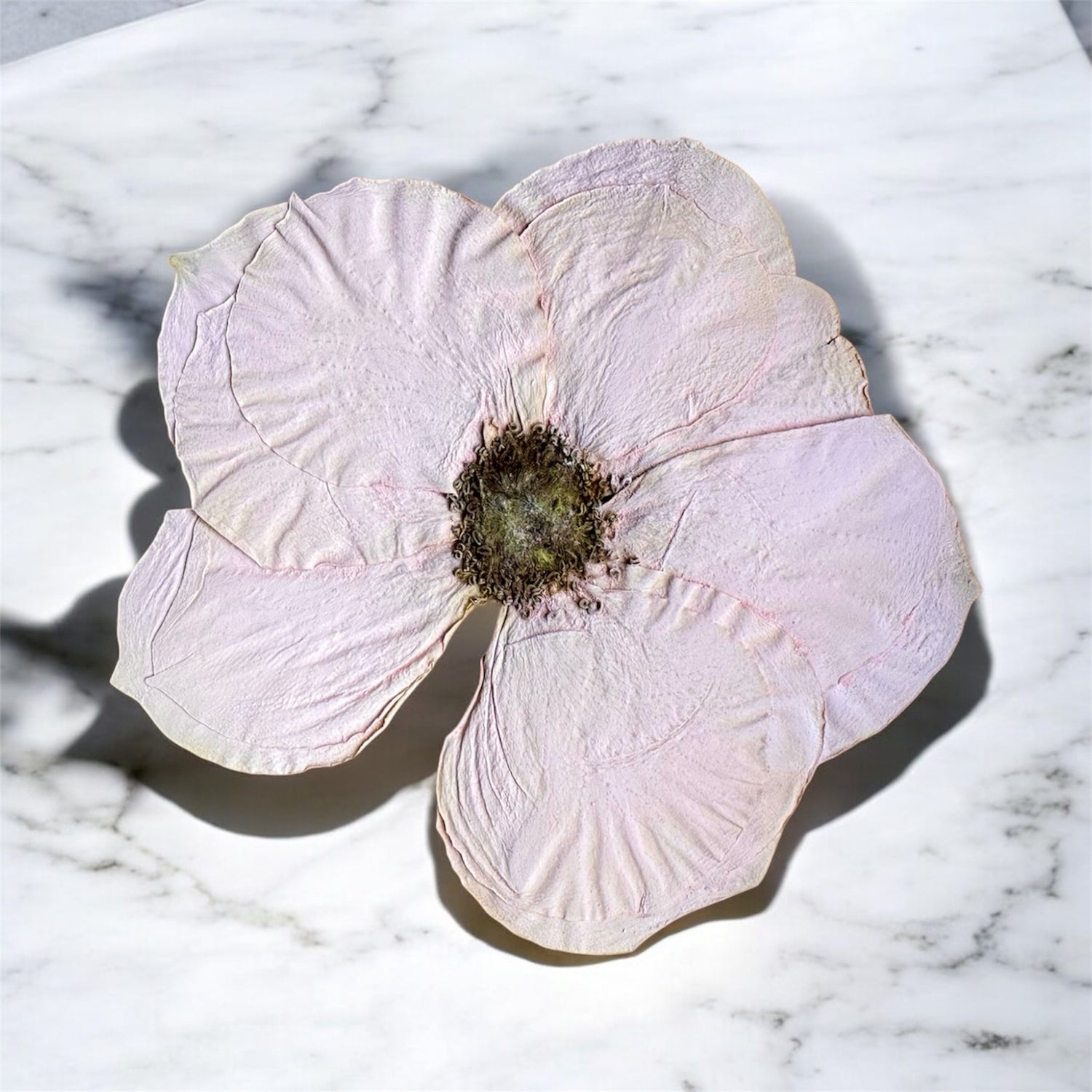
I’m Not Sure If I Need Color Correction for My Bouquet!
If you’re unsure, no problem! You can still request this service when you drop off or send us your bouquet. Additionally, if we determine after pressing that color correction would enhance the final result, we will reach out to you to discuss the options.

Color correction is recommended for those who want their white flowers to remain vibrant and bright for years to come. If you have any questions, feel free to reach out via email or DM us on Instagram!